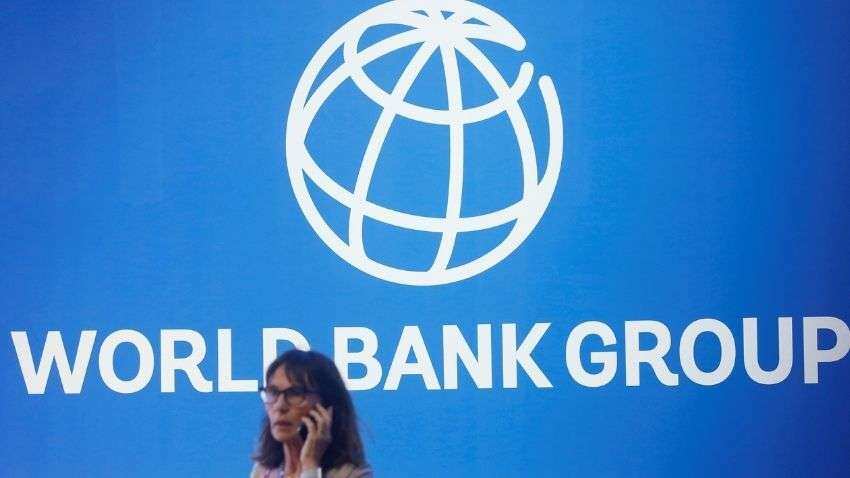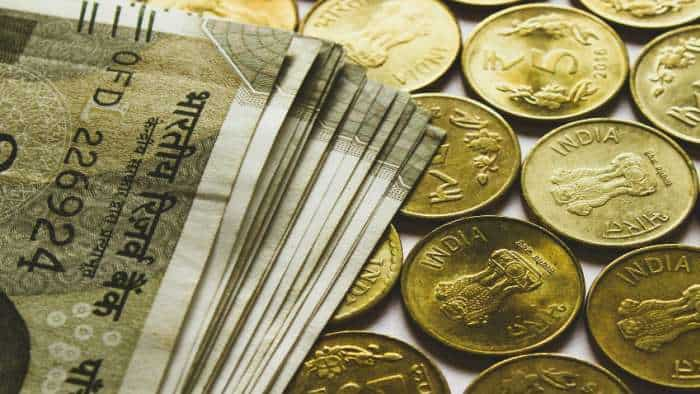World Bank sees sharp world growth slowdown, 'hard landing' risk for poorer
The World Bank on Tuesday cut its forecasts for economic growth in the United States, the Euro area and China and warned that high debt levels, rising income inequality and new COVID-19 variants threatened the recovery in developing economies.

The World Bank on Tuesday cut its forecasts for economic growth in the United States, the Euro area and China and warned that high debt levels, rising income inequality and new COVID-19 variants threatened the recovery in developing economies.
See Zee Business Live TV Streaming Below:
It said global growth is expected to decelerate "markedly" to 4.1% in 2022 from 5.5% last year, and drop further to 3.2% in 2023 as pent-up demand dissipates and governments unwind massive fiscal and monetary support provided early in the pandemic.
The forecasts for 2021 and 2022 were 0.2 percentage points lower than in the bank`s June Global Economic Prospects report https://www.reuters.com/world/world-bank-boosts-growth-forecasts-us-stim.... The International Monetary Fund https://www.reuters.com/business/imf-delays-release-new-forecast-jan-25-... is also expected to downgrade its growth forecasts in its update on Jan. 25.
The bank`s latest semi-annual forecast cited a big rebound in economic activity in advanced and developing economies in 2021 after contractions in 2020, but warned that longer-lasting inflation, ongoing supply chain and labor force issues, and new COVID-19 variants were likely to dampen growth worldwide.
"There is a pronounced slowdown underway," Ayhan Kose, director of the World Bank`s Prospects group, told Reuters in an interview. "Policy support is being withdrawn and there is a multitude of risks ahead of us."
Kose said the rapid spread of the highly contagious Omicron variant showed the continuing disruption caused by the pandemic, and said a surge that overwhelmed healthcare systems could knock up to 0.7 further percentage points off the global forecast.
COVID-19 has caused nearly 300 million reported infections https://graphics.reuters.com/world-coronavirus-tracker-and-maps worldwide and over 5.8 million deaths, according to data compiled by Reuters.
While 59% of the world`s population has received at least one dose of a COVID-19 vaccine https://ourworldindata.org/covid-vaccinations, only 8.9% of people in low-income countries have received at least one dose, according to the Our World in Data website.
Kose said the pandemic had widened diverging growth rates between advanced and developing economies, as well as within countries, which could spark increased social tensions and unrest.
He said the risks of a "hard landing" for developing countries were increasing given their limited options to provide fiscal support as needed, persistent inflationary pressures and elevated financial vulnerabilities.
The report forecast growth in advanced economies declining to 3.8% in 2022 from 5% in 2021, and dropping further to 2.3% in 2023, but said their output and investment would still return to their pre-pandemic trend by 2023.
The bank cut its 2021 U.S. gross domestic product growth by 1.2 percentage points to 5.6%, and forecast sharply lower growth of 3.7% in 2022 and 2.6% in 2023. It said Japan`s GDP growth would reach 1.7% in 2021, 1.2 percentage points less than forecast in June, rising to 2.9% in 2022.
China`s GDP was expected to expand by 8% in 2021, about 0.5 percentage points less than previously forecast, with growth seen slowing to 5.1% in 2022 and 5.2% in 2023.
Growth in emerging and developing economies is expected to drop to 4.6% in 2022 from 6.3% in 2021, edging lower to 4.4% in 2023, which means their output would remain 4% below the pre-pandemic trend.
Fragile and conflict-affected economies will remain 7.5% below their pre-pandemic trend, while small island states, rocked by the collapse of tourism, will be 8.5% below.
The bank noted that rising inflation — which hits low-income workers particularly hard — was at its highest since 2008 in advanced economies, and the highest since 2011 in emerging and developing economies.
Rising interest rates posed additional risks, and could further undermine the growth forecasts, especially if the United States and other large economies begin jacking up rates this spring, months earlier than expected, Kose said.
He said the pandemic had also pushed total global debt to the highest level in half a century, and concerted efforts were needed to accelerate debt restructuring efforts for countries facing debt distress, and get private sector creditors engaged.
The pandemic had sharply increased global inequality in income, healthcare, economic growth and the scale of job losses, hitting women and low-skilled and informal workers much harder.
"This trend has the potential to leave lasting scars," Kose said, noting that disruptions in education could affect human capital for generations.
Get Latest Business News, Stock Market Updates and Videos; Check your tax outgo through Income Tax Calculator and save money through our Personal Finance coverage. Check Business Breaking News Live on Zee Business Twitter and Facebook. Subscribe on YouTube.
RECOMMENDED STORIES

Senior Citizen Latest FD Rates: Know what major banks like SBI, PNB, Canara Bank, HDFC Bank, ICICI Bank are providing on fixed deposits

Gratuity Calculator: Rs 38,000 as last-drawn basic salary, 5 years and 5 months of service; what will be gratuity amount?

Retirement Planning: In how many years your Rs 25K monthly SIP investment will grow to Rs 8.8 cr | See calculations

Top 5 Small Cap Mutual Funds with best SIP returns in 1 year: See how Rs 25,000 monthly investment has grown in each scheme

Top 7 SBI Mutual Funds With Best SIP Returns in 1 Year: Rs 25,000 monthly SIP investment in No.1 fund has jumped to Rs 3,58,404

Top 7 Mid Cap Mutual Funds With up to 41% SIP Returns in 5 Years: No 1 fund has converted Rs 15,000 monthly investment into Rs 23,84,990

SBI 5-Year FD vs MIS: Which can offer higher returns on a Rs 2,00,000 investment over 5 years? See calculations
09:06 PM IST









 SBI named Best Bank in India for 2024 by Global Finance Magazine
SBI named Best Bank in India for 2024 by Global Finance Magazine  Uzbekistan's economy grows by 6.6% in past 9 months
Uzbekistan's economy grows by 6.6% in past 9 months Nirmala Sitharaman to visit Mexico and US from October 17 to October 26
Nirmala Sitharaman to visit Mexico and US from October 17 to October 26  World Bank expects 5.1% growth for Nepal
World Bank expects 5.1% growth for Nepal ISA, MIGA set up multi-donor trust fund to support solar projects
ISA, MIGA set up multi-donor trust fund to support solar projects